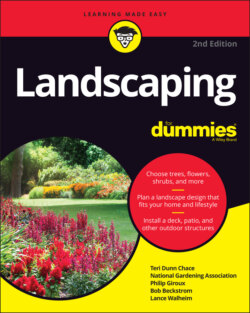Читать книгу Landscaping For Dummies - Lance Walheim - Страница 43
Achieving Unity, Blessed Unity, in Your Landscaping Design
ОглавлениеUnity is what keeps all those separate parts of your landscape tied together, so that the eyes and feet of visitors flow from one part of the yard to another. To achieve unity in your landscape, do the following:
Clearly define pathways. Pathways are a first step (no pun intended!) to unifying your landscape. Chapter 7 gives more details how you can add paths and walkways to your design.
Link greenery. A couple of shade trees and a flowering shrub stuck here and there in your lawn don’t create a unified landscape design. Plant a bed of pachysandra, lirope, or other groundcover or even lay down a thick layer of wood chips at the feet of these to visually link them together, continue the same groundcover along the fence and around the corner to the patio, stick in a couple more of the same sort of flowering shrub at the corner, and presto! Unity.
Have a style. Be clear about what you want the garden to say about you. Consider the following:If your tastes run to formal precision, for instance, you probably want clipped hedges, classic statuary, brick or stone pathways, and symmetrical plantings that provide calming mirror images.A cottage garden jumble of exuberant flowers with a rustic fence, bent-twig benches, and a concrete frog along the path tells visitors that you’re more of a free-spirit type.A combination of the two styles looks disjointed and has a disquieting effect on your landscape. But having unity in your landscape doesn’t mean that you can’t have your formal rose garden and your wildflower meadow — just don’t put them side-by-side. Separated by a hedge, on opposite sides of the house, or linked by a transition zone that gradually makes the shift from control to wilder, your gardens can be as fickle as your little heart desires. Look at the color insert for a way to add unity to your yard.
